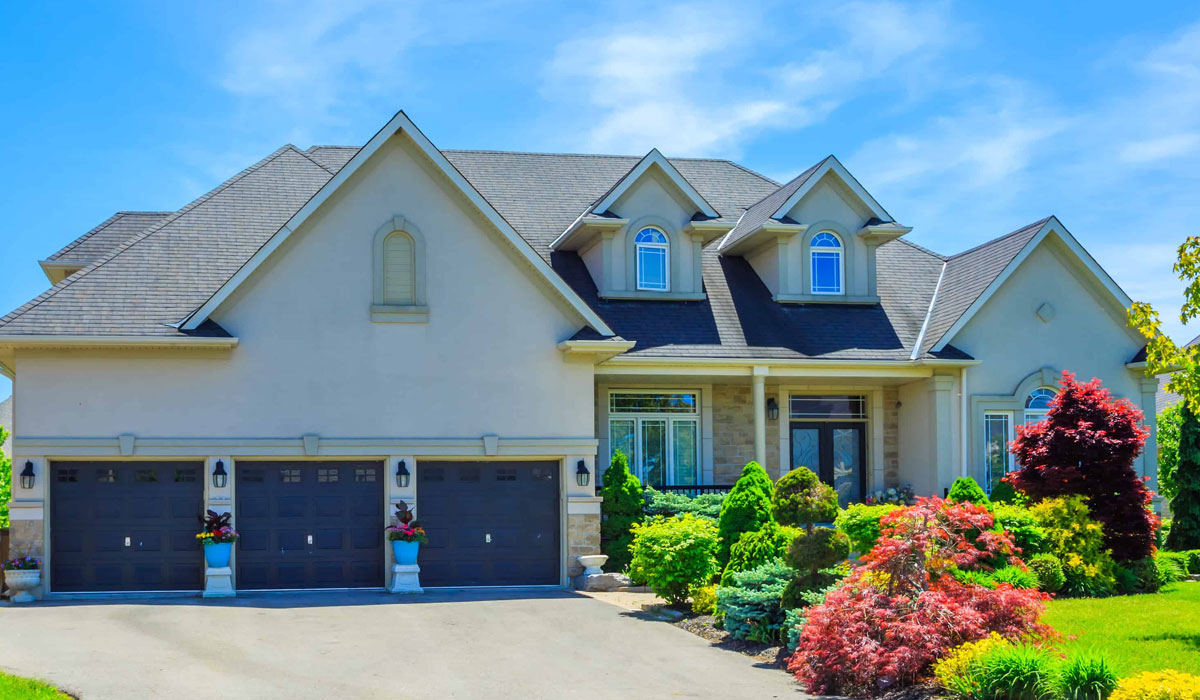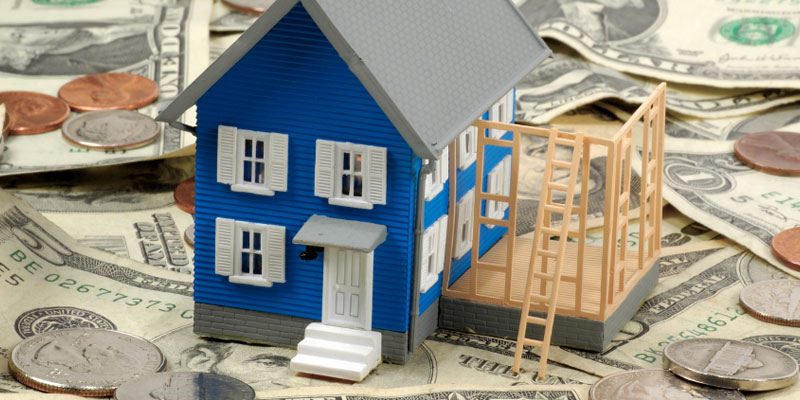
Prior to commencing a home search in your desired region and neighborhood, you’d be ill advised to submit a real estate offer without secured financing. For all-cash transactions, this is a moot point. However, with the majority of homebuyers financing home purchases, this is a necessary step.
This critical action is even more important within the current seller’s market led by low inventories and an influx of buyers. Gone are the days of arriving at a realtor’s open house and an offer is immediately accepted without any good faith in writing.
Currently, a mortgage pre-approval is the bare minimum. Many sellers now require a binding document such as a mortgage commitment letter, earnest money, or escalation clause to show proof of funds and intent to purchase. Contour Mortgage takes this even a step further, with its SecureBuy program on all of its loan products with all fully underwritten documents for priority consideration. This improves the likelihood of an accepted offer, and a smoother closing process.
Whether you’ve already researched financing, or are just starting out, it’s best to meet with a reputable mortgage lender to discuss the available options best meeting your needs.
Learn more about the various loan products currently offered by Contour Mortgage, as well as the features, benefits, requirements, and qualifications of each.

Known for flexibility, conventional home loans span 10- to 30-year terms with fixed or adjustable rates. Typically granted to borrowers with average to good credit ratings and equal debt-to-income (DTI) ratios, down payments can range from 3 percent to 20 percent, depending on your financial situation and mortgage requirements.
Despite this broad threshold, private mortgage insurance (PMI) could be required when providing less than 20 percent down at closing. This grants added assurance for the lender until the loan-to-value reaches 80 percent.
Property taxes and homeowner insurance payments can also be bundled into your mortgage, or you can pay these separately to each creditor.

With the coronavirus pandemic and other global factors affecting interest rates, refinancing is on the upswing. According to a Research Note from loan originator Freddie Mac, 2020 experienced the highest annual refinancing levels since 2003.
Most borrowers refinance for these top five reasons:
When refinancing, lenders examine elements such as DTI, existing equity versus market value, and credit scores. Should borrowers fall short on one—or all—of these factors, you could still qualify through government-backed loans, such as those offered through the Federal Housing Administration (FHA).
Learn more about the various types of refinancing options offered through Contour Mortgage:
Available through approved lenders such as Contour Mortgage, the most common government-backed loans are those offered through the FHA, U.S. Department of Agriculture (USDA), and Veterans Affairs (VA). With less stringent requirements due to federally funded subsidies and insurance, these protect borrowers and lenders from loan default or other issues. Additional benefits include lower credit ratings and DTI ratios. Some lenders might also consider previously resolved financial issues, such as bankruptcies, liens, and foreclosures.
These loans also extend first-time homebuyers with purchase and improvement project grants by state, local, and nonprofit agencies. More information on these can be found through the U.S. Department of Housing and Urban Development (HUD) website.
Suitable for single-family homes, condominiums and co-ops, and multi-family dwellings, loans offered through the FHA, USDA, and VA, all have various requirements and qualifications. Learn more about each below, and contact a Contour Mortgage loan officer for further information.

With its roots established during the Great Depression to ensure home ownership for young families, FHA loans can be achieved with down payments as low as 3.5 percent. Unlike conventional loans, this option doesn’t heavily weigh qualifications such as DTIs and credit ratings. However, it’s best to consult the FHA Mortgage Limits Tool to ensure you can borrow the required amount for the region where you plan to reside.
If borrowers are short on funds, this loan also facilitates gifting whereby family members, friends, or other donors with no vested interest in the property can contribute up to 100 percent of this loan. The FHA deems this acceptable, provided the funding is used for home purchases or improvements, closing costs, and other fees. Learn more about gifting on the HUD website, or contact a Contour Mortgage representative for assistance.
Another standout feature is this loan’s assumability, whereby an outstanding mortgage on the current home can be transferred to the new buyer obtaining an FHA loan.

Typically geared for borrowers requiring up to 2,000-square-foot homes in sparsely populated regions, USDA loans are backed by the Rural Development Guaranteed Housing Loan Program. With low- to moderate- income homeowners in mind, this loan can be obtained without a down payment and closing fees.
Borrowers also aren’t required to purchase PMI, provided they meet requirements of at least two years of below-limit, steady income; good credit; and a balanced DTI.

Established during World War II to ensure those who served could effectively care for their families, VA loans are suitable for veterans, active-duty service personnel, reservists, and National Guard members.
Suitable for primary residence home purchases or improvement projects, borrowers must have served at least six months active duty. Reservists and National Guard members are eligible after six years, or active duty for a minimum 181 days. Combat military personnel serving 90 days could also qualify.
Similar to USDA loans, these don’t require a minimum down payment or PMI. Additional benefits include lower closing costs and DTI, and credit counseling.
Existing VA loans acquired after March 1, 1988 can also be assumed by qualified borrowers.

Those aged 62 and older can switch to a FHA-sponsored reverse mortgage if they’re currently living in their primary residence with a low loan balance. Available as a Home Equity Conversion Mortgage (HECM), it taps into the home’s equity as cash toward remaining principal or home improvement debts.
Borrowers aren’t required to make monthly payments provided they remain in the home with no loan defaults. You can either access money in a lump sum, establish a line of credit to use as needed, or a combination of the two.
When and if the home is left permanently, the balance on your reverse mortgage becomes due. Selling the home itself can pay for this—any remaining equity belongs to the current homeowner or their heirs.

Both Fannie Mae and Freddie Mac are mortgage-backing entities providing liquidity, stability, and affordability to the greater mortgage market.
As the largest backer of 30-year, fixed-rate mortgages, Fannie Mae—also known as the Federal National Mortgage Association—provides mortgage funding through loan purchases from banks and other lending institutions. Boasting programs for both first-time and repeat homeowners, these loans help with traditional home purchases or real estate-owned properties (REO), and refinancing.
Also known as the Federal Home Loan Mortgage Corporation, Freddie Mac purchases bundled home mortgages as mortgage-backed securities. This helps lenders mitigate risks while also creating available funds for loans through various products aimed at all types of borrowers. These include financial assistance, renovations and rehab projects, cash-out refinancing, and more.

Customarily used for luxury properties, jumbo loans have become more common to meet rising home prices and higher cost-of-living expenses in certain U.S. regions. Buyers looking in moderately priced neighborhoods could still require a jumbo loan in competitive areas.
Depending on your location, a true jumbo loan can range anywhere from $647,200 to as much as $970,800 for a single-family home.
This option can help borrowers purchase properties exceeding the 2022 Federal Housing Finance Agency (FHFA) maximum conforming loan limits, provided they meet specified income requirements, qualifications, credit ratings, and DTI ratios. Jumbo loans could also be exempt from PMI if the borrower can pay at least 20 percent of the purchase price.
Depending on the borrower’s DTI ratio, credit rating, and down payment, a jumbo loan could carry a rate similar to a conventional mortgage. It’s best to conduct your own research on these variables and consult a mortgage lender specializing in jumbo loan products.

Contour Mortgage also offers several financing options when purchasing condominium or co-op properties. While there are distinct differences between both, many still confuse the former with the latter. Also known as condos, these dwellings are similar to purchasing a single-family home. With a co-op, because you’re investing in shares administered by a corporation owning the physical property, you’ll receive a proprietary lease for your unit.
Co-ops typically have a mortgage against the entire property, which is known as the underlying permanent mortgage. Payments are shared by unit co-operators via monthly maintenance charges. In condos, each unit exists as a separate property, but common features such as lobbies and hallways are owned jointly.
Similar to a single-family home, when financing a condo, you can choose from either a conventional or government-backed mortgage. With co-ops, borrowers purchase a shared loan, with one deed or mortgage for the entire building.

While the most conventional route is a move-in ready or new construction home, other options include fixer-uppers or rehab properties. With both requiring more upgrades, repairs and maintenance, purchasing a home that needs work could be the ticket to your customized dream home.
Despite these advantages, some consumers are still hesitant due to uncertainty regarding project scope and affordability. However, there is a way to add renovation costs to a new home or mortgage through various options.
Designed for major repairs to a primary residence, this loan addresses damages from fire or flooding. Minimum renovation requirements start at $5,000, covering up to $625,000 for both purchase and renovation costs.
Foundation issues could also fall within this category for required structural improvements mitigating safety risks, as well as room additions and floor repairs.
Known as FHA Streamline loans, these cover less extensive repairs, comprising changes below $35,000. This can include upgrades and other cosmetic improvements, such as kitchen and bathroom updates, and replacing outdated appliances. With pros such as low down payments, and choice of two loan types, it’s important to note that upgrades can be subject to approval.
These fixed-rate or ARM loans, cannot have an original principal exceeding the association’s maximum mortgage amount for a conventional primary mortgage.
The transaction type also plays a role in how much is covered. According to the HomeStyle Renovation Mortgages: Loan and Borrower Eligibility requirements, borrowers purchasing a home cannot incur rehab costs more than “75 percent of the lesser of the sum of the purchase price of the property plus renovation costs, or the ‘as-completed’ appraised value of the property.”
Those wishing to refinance would not be permitted to exceed 75 percent of the as-completed appraised property value.
Similar to the aforementioned Fannie Mae HomeStyle, Freddie Mac also offers a renovation loan for both single-family and multiple-unit dwelling properties. This applies to second home or investment properties.
These loans can be paid off with terms ranging from 15 to 30 years. Down payments for single-family homes can be less than the typical standard 20 percent, with higher rates for multi-family properties.
Applicable credit ratings are also required, and guided by down payment amount, DTI, and other factors.

Whether investing in a secondary property as a landlord, or purchasing a multi-family home to live with extended family, Contour Mortgage can help with this specialized financing.
Because this involves a larger dwelling comprising several individual units, applying for a multi-family loan is more extensive than a single-family residence. While this might sound daunting, it doesn’t have to be when working with a qualified mortgage lender.
Start by preparing documentation for underwriting, such as property management agreements, current lease agreements, insurance policy declaration, tax bills, and more. You’ll also need specific details such as the building address, photos, number of units, and age of the property; financials including the current operating statement, rent roll, utilities, and copies of service contracts; and personal financial statements proving equity, cash reserves, and down payment funds.

While government-backed entities such as the FHA and VA don’t support secondary home loans, there are many conventional options offered through Fannie Mae and Freddie Mac.
Similar to primary residences, you must obtain necessary financial documents before meeting with your lender. Check out our recent blog “How to Buy a Vacation Home” for more information.
When researching the best financing for your dream home, look no further than a reputable mortgage lender to help with the process and secure the optimal option for your lifestyle and needs.
Contour Mortgage provides lending services throughout the United States. Contact us to learn how our various loan products can help with primary and secondary mortgages, refinancing, and more.
